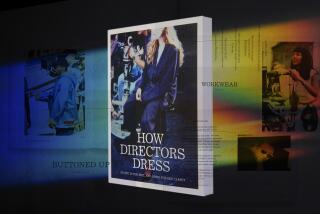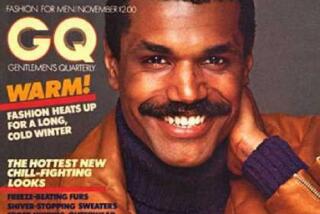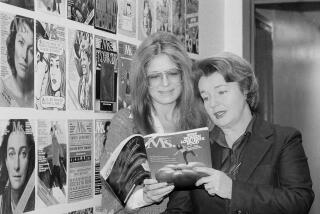Nancy White, 85; Edited Harper’s Bazaar 1958-71
- Share via
Nancy White, the editor of Harper’s Bazaar who guided the magazine through the tumultuous fashion changes of the 1960s, died at her Manhattan home Saturday of cancer. She was 85.
The impeccably groomed White edited the Hearst magazine from 1958 to 1971, a time when fashion, and fashion editors, became increasingly flamboyant.
“She was very much a typical lady who knew how to edit a magazine,” said Eleanor Lambert, a New York City publicist and contemporary. “She did not operate by personality and do eccentric things. She was not a fashionista at all,” Lambert said, in reference to White’s main competitor, the colorful, legendary Vogue editor Diana Vreeland, and current-day editors.
After a 16-year stint at another Hearst magazine, Good Housekeeping, where she rose from an assistant to become fashion editor, she joined Bazaar as assistant editor. She arrived at the close of some of the most important years for Bazaar, when then-fashion editor Vreeland, art director Alexey Brodovitch and White’s aunt, the celebrated editor Carmel Snow, together revolutionized the look of fashion magazines through elegant graphic design and photography. Snow handpicked her niece as her successor, and soon after, Vreeland left and became head of Vogue.
White, who wasn’t known as an innovator and was overshadowed by Vreeland, is nevertheless remembered for maintaining and enhancing the graphic purity of Bazaar throughout her reign.
She was born to a publishing family, the daughter of Thomas White, a onetime general manager of several Hearst magazines. Throughout three marriages, including one to Fortune magazine publisher Ralph D. Paine Jr., she was known as Miss White, a moniker that was simultaneously a mark of her independence and genteel upbringing.
“She was brought up as a lady,” said Marilyn Evins, founder of the namesake New York public relations agency who worked with White. “After all, her aunt was the dowager queen in the industry.”
Though conservative, White wasn’t stuffy and was known for fostering new designers and photographers. “She was always championing the young talents that were coming along,” Evins said. “She pushed them and inspired them.”
White made the magazine a showcase for legendary photographers such as Richard Avedon and Hiro, who have returned to its pages under the direction of its new editor, Glenda Bailey.
“Miss White was extremely good at mixing the avant-garde with the accessible,” said Bailey, who was born the year that White was appointed editor. “She edited Bazaar at a time when society was undergoing enormous change. She represented cultural milestones in memorably creative and stylish ways--a fashion shoot at Cape Canaveral and a striking image of the new contraceptive pill photographed by Hiro.”
Though she was known for her seriousness, not her wit, colleagues in the industry considered her personable and professional, said Bernadine Morris, a former fashion critic at the New York Times. “She was sort of the picture of a fashion editor,” Morris said. “She was so neat and clean and always appropriately dressed.” Morris recalled that White took pains to appear at fashion shows wearing a designer’s look and even changed clothes in her limousine in between shows.
When White left Bazaar, she became fashion director for Bergdorf Goodman. She also became the first woman to join the board of directors for General Mills Corp. The former editor devoted herself to philanthropy, and organized one of the March of Dimes’ most successful fund-raisers, a dinner cooked by top chefs.
White had a daughter, Gillette Dauphinot Piper, with her first husband, Clarence Dauphinot, founder of Deltec International; and with Paine, a second daughter, Katharine Delahaye Paine. In 1978, she married her high school sweetheart, George K. Thompson. She is survived by her daughters, a stepdaughter, a brother, a sister, three grandchildren and three great-grandchildren.






